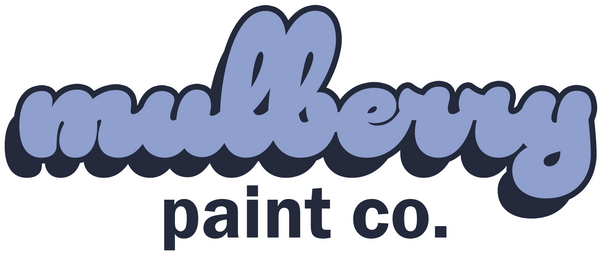Have you seen people make dye, pigment, or paint from plant material? It is so cool! Let me tell you how to make paint by creating these three things.
Needed for dye:
- Pots
- Glass Jar
- Funnel
- Coffee filter
- Muslin cloth or strainer
- Plant matter (weigh it, important for later. Try for at least 30g.)
Needed for pigment:
- Dye
- Coffee filter
- Large vase or glass jar
- Alum (potassium aluminum sulphate)
- Washing soda (sodium carbonate)
1. Extract the Dye
Experimenting with plant matter and fruit/vegetable scraps is a fun process. The first step in our paint making journey is to collect material from which to extract the dye.
Do you have some in your yard or fridge? I collected wild violets from my backyard.
Here is how you extract the dye:
- Put the plant material in a pot and cover it fully with water. It can be dried out or fresh, it doesn't matter. The more material you have, the stronger the dye we can make.

- Let it sit overnight.
- The next day, simmer for at least one hour, up to three. This will extract the dye.
- Once it cools, you may strain it through a mesh strainer, or even better, muslin cloth.
- Keep the dye that strains through, not the matter that collects in the strainer.

2. Create the Lake Pigment
Now that we have our dye, let's use it to make a lake pigment! Lake pigment is pretty easy to make. Some materials require boiling but some, not all, might be ruined by boiling. I have not found a list of plants you cannot boil, so this may take some learning by trial. I do know that madder can be ruined if you boil it, so keep that in mind.
When creating the lake pigment, you will be adding alum and alkali to the dye, and some may take a bit more or less than others. Again, this is only by trial and error that you can figure out how much you need. I will give you a pretty good baseline, but if you find different ratios that work for you, be sure to write it down ASAP!
Here is how to create lake pigment:
- Reheat the dye liquid to at least 110 degrees F. Do not boil.
- Pour it into a large jar or vase. Make sure it is at least twice the volume of the dye.
- Measure alum. You will need 60% the weight of your starting plant material (from when you made the dye).
- Add the alum to the reheated dye. Stir to dissolve.
- Remember how much alum you used? Measure out your washing soda to be half this amount. In a separate bowl, dissolve this into a bit of hot water.
- Slowly or incrementally pour this into the dye solution. It should foam a bit as the alum and washing soda neutralize each other.

- Let sit overnight (or dont! I like to but I don't think that it is completely necessary). The solution will settle into two parts. On top, a liquid, on bottom, the lake pigment!
- Slowly pour the whole container through the coffee filter to collect the pigment. The liquid will drain slowly, and depending on how much dye you started with, it may take hours for it to completely filter through.
- Rinse the wet pigment with distilled water. You can do this by stirring the whole filter with the pigment on it into a large bowl or bucket of distilled water. If you don't do this step, you risk crystallization of the drying pigment which will ruin your project. Let it sit in there until the water takes all the pigment off the filter, then discard the filter. Now you have a new solution to filter again!
- Get another coffee filter and pour the distilled water and pigment through. You may repeat the distilled water step as many times as you'd like, but at least once is necessary.
- Now you have a filter with plant matter paste on it. Let this dry out (may take a few days) and boom bam you have pigment!

- Scrape off the paper filter, collect into a small container.

There you have it! Want to make paint next? Click here!

